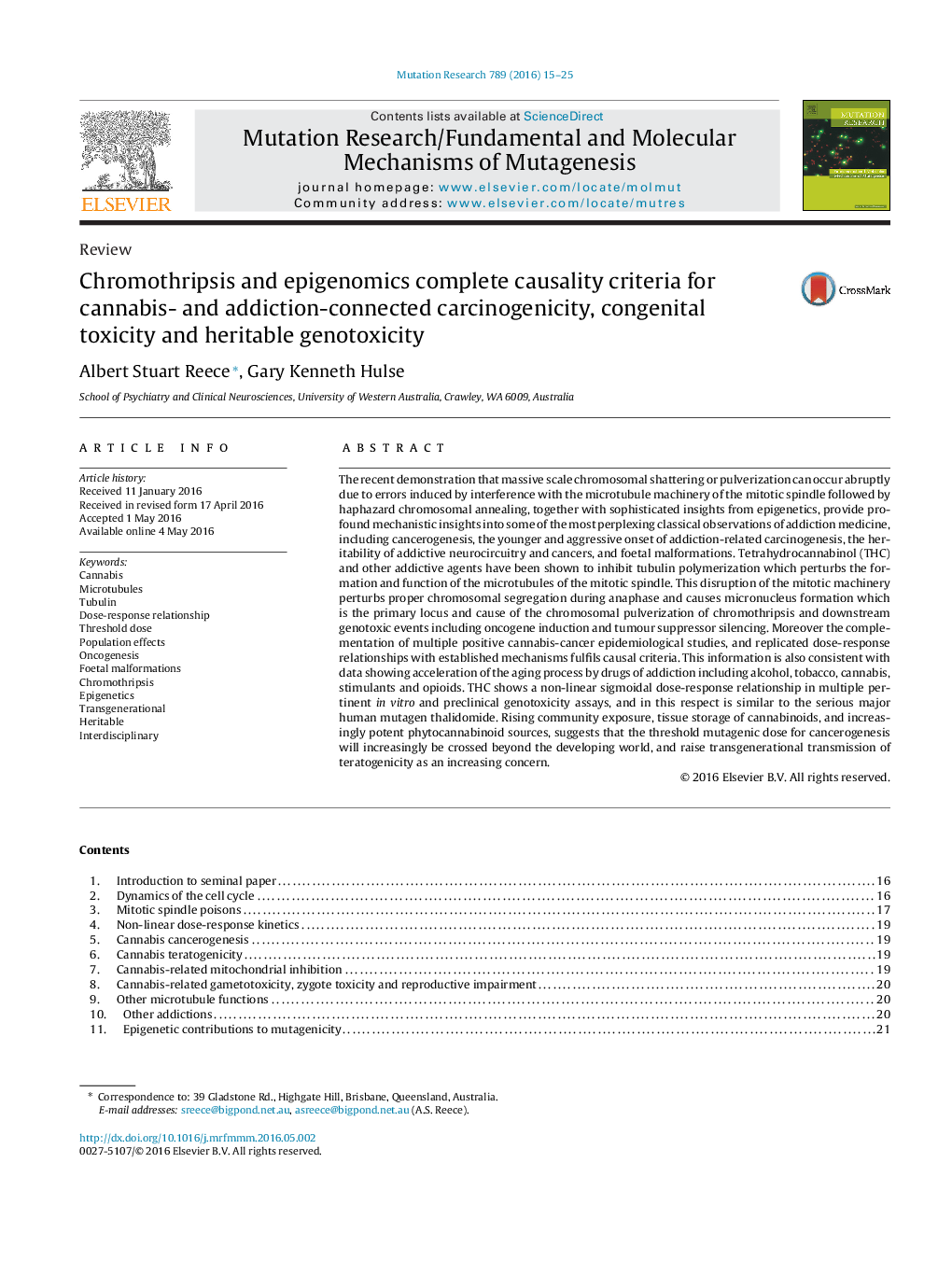| کد مقاله | کد نشریه | سال انتشار | مقاله انگلیسی | نسخه تمام متن |
|---|---|---|---|---|
| 2146124 | 1548311 | 2016 | 11 صفحه PDF | دانلود رایگان |
• Chromothripsis occurs when a chromsome becomes dislodged from the mitotic spindle, isolated in micronuclei and chaotically re-connected.
• Cannabis has been shown to disrupt tubulin dynamics and induce micronucleus formation and chromosomal mis-segregation in mitotic anaphase.
• Cannabis has been linked epidemiologically with major foetal malformations and cancer induction in children and cancers in adult populations.
• Chromothripsis and epigenetic damage from cannabis form major pathways to oncogenesis, fetotoxicity and ageing in humans and their offspring.
• Explication of mechanisms for cannabis and other addictions closes the logical loop and completes the criteria for the assignment of causality.
The recent demonstration that massive scale chromosomal shattering or pulverization can occur abruptly due to errors induced by interference with the microtubule machinery of the mitotic spindle followed by haphazard chromosomal annealing, together with sophisticated insights from epigenetics, provide profound mechanistic insights into some of the most perplexing classical observations of addiction medicine, including cancerogenesis, the younger and aggressive onset of addiction-related carcinogenesis, the heritability of addictive neurocircuitry and cancers, and foetal malformations. Tetrahydrocannabinol (THC) and other addictive agents have been shown to inhibit tubulin polymerization which perturbs the formation and function of the microtubules of the mitotic spindle. This disruption of the mitotic machinery perturbs proper chromosomal segregation during anaphase and causes micronucleus formation which is the primary locus and cause of the chromosomal pulverization of chromothripsis and downstream genotoxic events including oncogene induction and tumour suppressor silencing. Moreover the complementation of multiple positive cannabis-cancer epidemiological studies, and replicated dose-response relationships with established mechanisms fulfils causal criteria. This information is also consistent with data showing acceleration of the aging process by drugs of addiction including alcohol, tobacco, cannabis, stimulants and opioids. THC shows a non-linear sigmoidal dose-response relationship in multiple pertinent in vitro and preclinical genotoxicity assays, and in this respect is similar to the serious major human mutagen thalidomide. Rising community exposure, tissue storage of cannabinoids, and increasingly potent phytocannabinoid sources, suggests that the threshold mutagenic dose for cancerogenesis will increasingly be crossed beyond the developing world, and raise transgenerational transmission of teratogenicity as an increasing concern.
Figure optionsDownload as PowerPoint slide
Journal: Mutation Research/Fundamental and Molecular Mechanisms of Mutagenesis - Volume 789, July 2016, Pages 15–25
